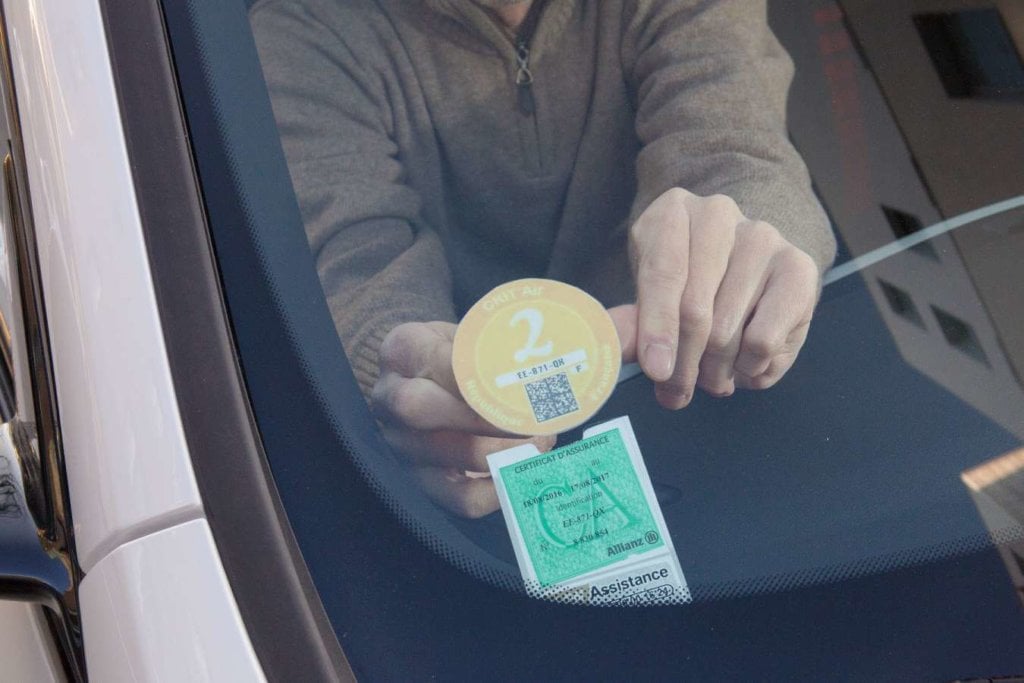What is the Crit'Air sticker?
Crit'Air is a tool for local authorities committed to improving air quality: communities with pollution problems can introduce ZCR (Zones à Circulation Restreinte - restricted traffic zones) using Crit'Air stickers to adapt traffic flow and improve air quality over the long term.
Today, it is estimated that one in every 7 deaths worldwide are due to air pollution, and that 42,000 deaths in France each year due to air pollution. And road traffic is one of the main culprits as two-thirds of nitrogen dioxide emissions and 55% of particulate emissions come from road traffic in Paris. It is also estimated that diesel cars account for 40 % of particulate emissions in the capital.
The Certificat de Qualité de l'Air, also known as the Crit'Air sticker, pollution sticker or anti-pollution sticker, is a secure sticker to be affixed to the windscreen of your vehicle, indicating its environmental class according to its atmospheric pollutant emission levels.
Good to know:
Today, living in Paris during a pollution peak is like breathing in the smoke from eight cigarettes in a 20-square-meter room.
What are the different categories of Crit'Air stickers?
There are 6 categories of Crit'Air stickers stickers, ranging from the least to the most polluting vehicles:
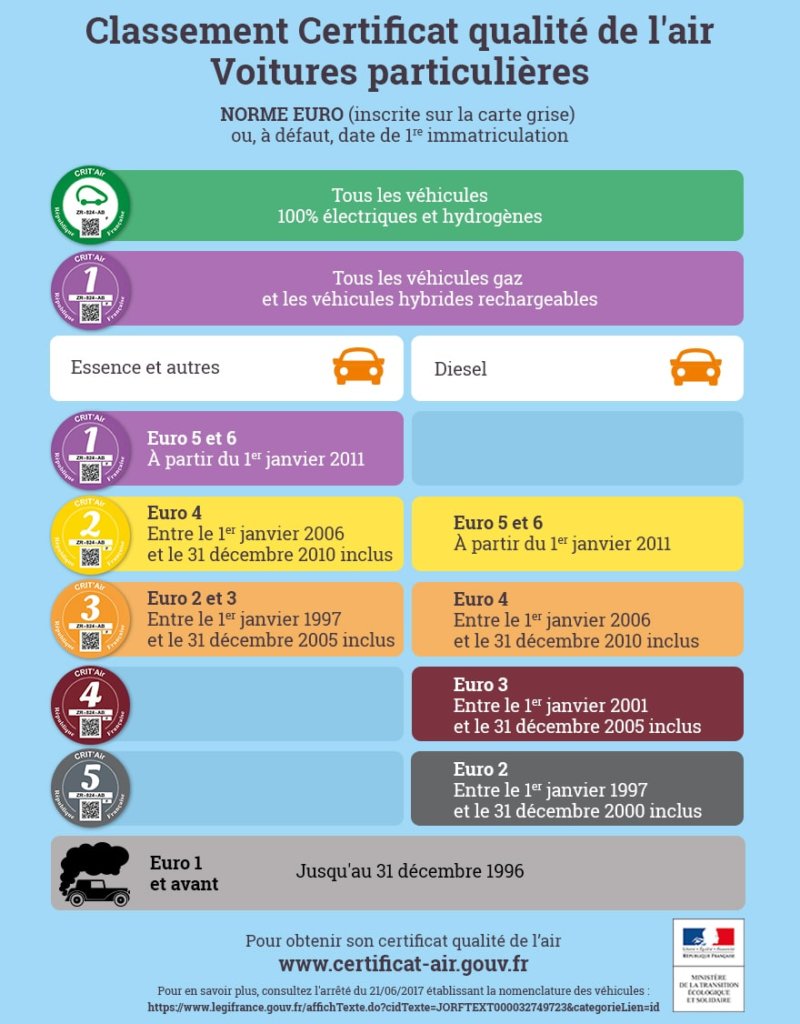
Green sticker
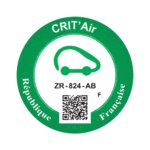
Crit'Air 0 is a sticker for all 100% electric or hydrogen-powered vehicles.
Purple sticker
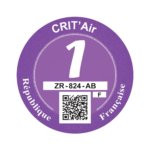
Crit'Air 1 is a sticker for all gas-powered and rechargeable hybrid vehicles.
Gasoline : all Euro 5 and 6 petrol vehicles.
Yellow dot
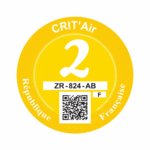
Crit'Air 2 is a sticker corresponding to all the following vehicles:
Petrol : all Euro 4 petrol vehicles or those registered between January 1, 2006 and December 31, 2010 inclusive.
Diesel : all Euro 5 and 6 vehicles or those registered from January 1, 2011 inclusive.
Orange sticker
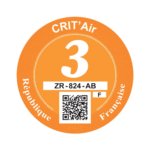
Crit'Air 3 is a sticker corresponding to all the following vehicles:
Gasoline : all Euro 2 and 3 vehicles or those registered between January 1, 1997 and December 31, 2005 inclusive.
Diesel : all Euro 4 vehicles or those registered between January 1, 2006 and December 31, 2010 inclusive.
Brown dot
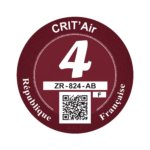
The Crit'Air 4 sticker applies to all the following vehicles:
Diesel : all Euro 3 vehicles or those registered between January 1, 2001 and December 31, 2005 inclusive.
Grey sticker
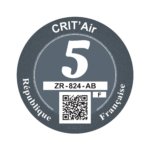
Diesel : all Euro 2 vehicles or those registered between January 1, 1997 and December 31, 2000 inclusive.
Which zones are affected by the Crit'Air sticker?
The Air Quality Certificate is mandatory for driving and parking in the restricted traffic zones set up by certain local authorities, and for driving in the ZPAs when the local prefecture introduces differentiated traffic.
Eco-labels are already compulsory in Grenoble, Lyon-Villeurbanne, Lille, Strasbourg and Paris. But in addition to Grenoble, Lyon and Paris, other large municipalities will also be affected in the near futureThese are the areas covered by an atmospheric protection plan (PPA). In fact, all agglomerations where pollution peaks are frequent could adopt such a plan to introduce traffic restrictions. It will be up to the elected representatives and prefects of the areas concerned to decide.
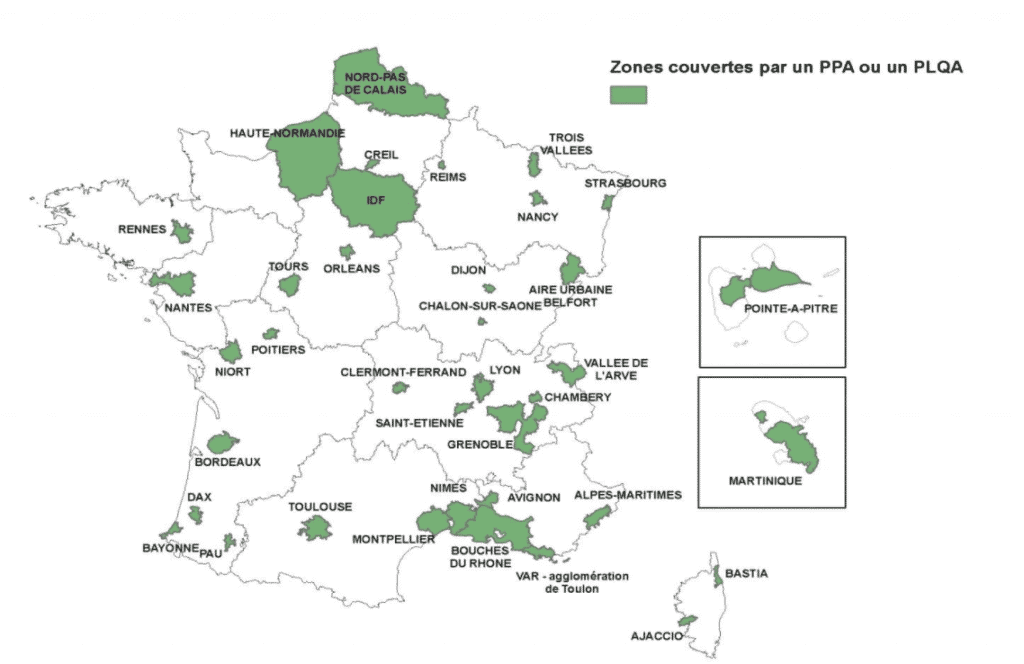
To find out whether your local prefecture has introduced differentiated traffic, you can consult the following tool Vigilance Atmosphérique tool set up by the French Ministry of the Ecological Transition.
This site collects, manages and disseminates information on forecasts of ambient air pollution episodes and on prefectoral procedures implemented during such episodes, including differentiated traffic: it is automatically updated as soon as a prefectoral procedure is decided.
What are the advantages for electric vehicle users?
In addition to traffic restrictions, the Crit'Air certificate is an essential element for electric cars. In fact, the Crit'Air certificate is an excellent lever of benefits for EV owners:
- Favourable parking conditions
- Ideal traffic conditions
- Possibility of driving in restricted traffic zones or during pollution peaks
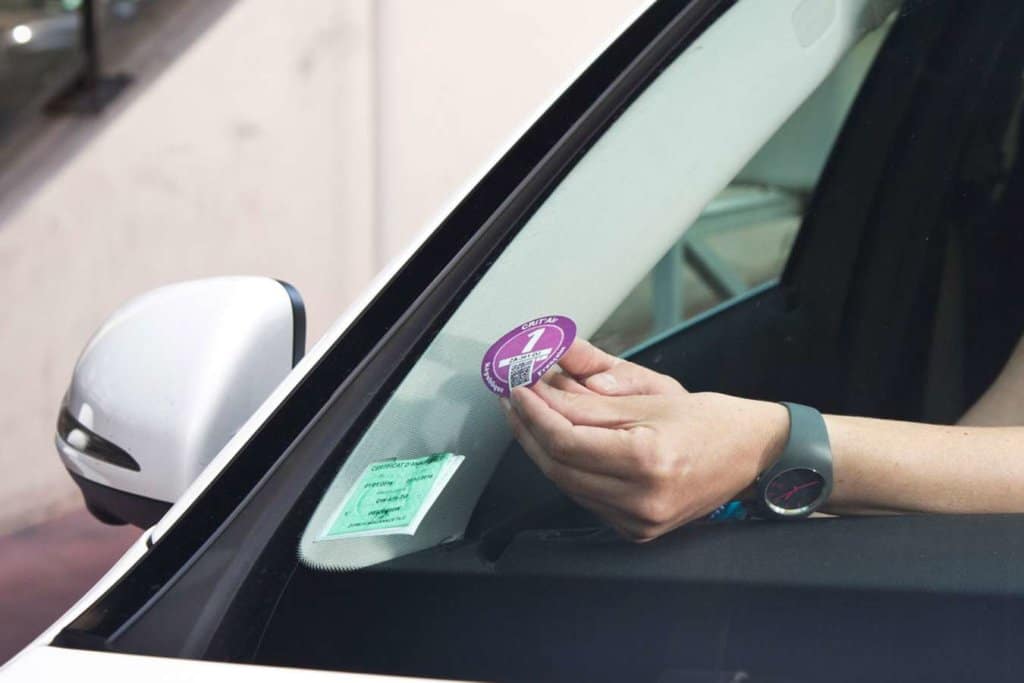
Are Crit'Air stickers also available for motorcycles?
Of course! The stickers are also available for two-wheelers, and follow the same principle as their 4-wheeled rivals.
- Green sticker : for all zero-emission vehicles (100% electric and hydrogen).
- Purple sticker : for 2-wheeled vehicles complying with the Euro 4 standard marketed from January 1, 2017 for motorcycles and January 1, 2018 for mopeds.
- Yellow sticker : for 2-wheeled vehicles complying with Euro 3 standards from January 1, 2007 to December 31, 2016 for motorcycles and December 31, 2017 for mopeds.
- Orange sticker : for 2-wheeled vehicles meeting Euro 2 standards from July 1, 2004 to December 31, 2006.
- Brown sticker : for all other 2-wheeled vehicles registered between June 1, 2000 and June 30, 2004.
How do I obtain a Crit'Air certificate?
The Crit'Air certificate can be requested online via the official Crit'Air websiteOn this tool, you can run a simulation to find out which Crit'Air category your vehicle belongs to.
When placing your order, please have your vehicle registration document ready, so that you can find out which Euro standard standard your vehicle belongs to, as well as the date of your first registration. You will also be asked for this document number when you place your order.
How much does a Crit'Air certificate cost?
Once you have placed your order, your Crit'Air sticker will be mailed to the address shown on your vehicle registration document.
Be careful, therefore, if your address is not up to date on this document. Delivery times are generally around ten days. When making your purchase, beware of unofficial sites, which take advantage of the event to boost their margins and offer you a colored badge that's much more expensive than the real thing.
The price of the anti-pollution sticker is set at 3.70 euros. Including postage, this means that you will have to pay 3.62 euros to obtain this precious sesame. This is considerably less than the 300 to 400 francs charged for the car sticker that had to be affixed to all vehicles on the road until the late 1990s.
How to use the crit'Air sticker?
Where to stick your Crit'Air certificate?
It's great to have a Crit'Air sticker, but do you know where to stick it? Don't panic, we'll explain everything!
The air quality certificate must be affixed to the front of the vehicle in such a way that it can be read by enforcement officers from the outside. Positioning may vary according to vehicle type:
- Cars: for cars, light commercial vehicles, HGVs, buses and coaches: you'll need to affix your sticker inside the vehicle, front visible from the outside, on the lower right-hand side of the windscreen.
- Other: for motorized two-wheelers, tricycles and quadricycles: you will need to affix your sticker on the front, visible from the outside, on any surface forward of the plane formed by the fork.
What are the penalties for failing to obtain a Crit'Air certificate?
The absence of a Crit'Air sticker or the wearing of a non-matching Crit'Air sticker have been punishable by a fine set according to the different types of vehicle since January 1, 2017.
The fine for driving without a Crit'Air sticker can range from €68 for cars and other vehicles, to €135 for trucks and coaches. This can be increased to €180 if not paid within 45 days.
Good to know : In the event of an inspection, you can present the receipt (invoice) you received when you applied for your vignette.
Key points to remember
Now that you know all about Crit'Air stickers, here are the key points to remember:
- The Crit'Air certificate is still compulsory in ZCRs (Zones à Circulation Restreinte) and temporarily compulsory in ZPAs and ZPADs (Zone de Protection de l'Air Départementale).
- To find out if you are located in one of the cities concerned by the anti-pollution sticker, refer to the PPA map.
- Beware of scams! You must order the certificate from the official Crit'Air websitewebsite, at a cost of €3.62 for delivery in France.
- Your Crit'Air sticker must be visible from the outside in the event of an inspection.
Beev offers multi-brand 100% electric vehicles at the best prices, as well as recharging solutions.
